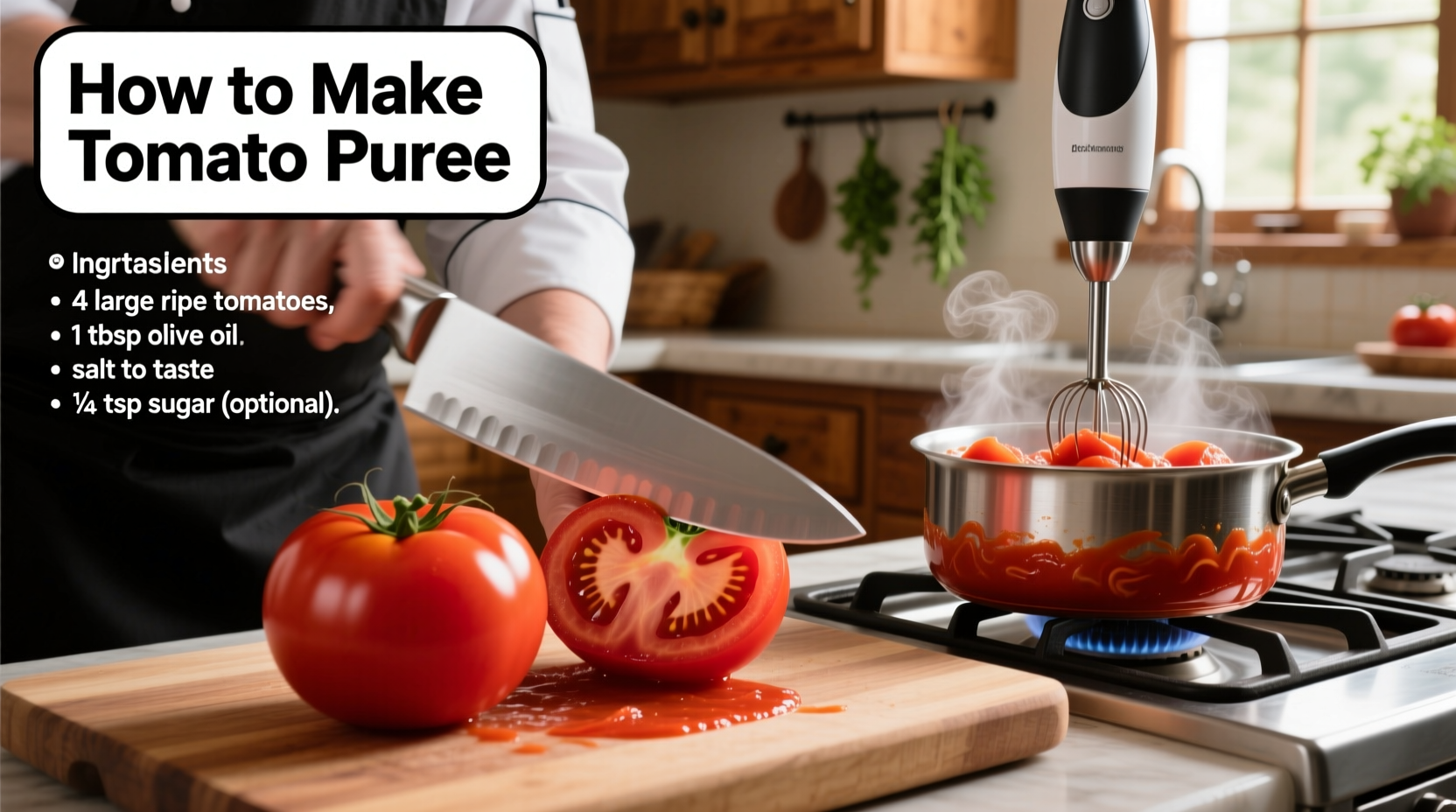Homemade tomato puree transforms your sauces, soups, and stews with vibrant flavor that store-bought versions can't match. Unlike commercial products containing preservatives and thickeners, fresh puree lets you control texture and taste while preserving maximum nutrients. Whether you're preserving summer's bounty or elevating weeknight meals, mastering this fundamental technique opens endless culinary possibilities.
Why Homemade Beats Store-Bought Every Time
Commercial tomato purees often contain citric acid, calcium chloride, and other additives to extend shelf life. When you make your own, you control the ingredients and avoid unnecessary chemicals. Fresh puree delivers brighter flavor and superior texture because you can adjust consistency precisely for your recipe needs.
| Characteristic | Homemade Puree | Store-Bought Puree |
|---|---|---|
| Ingredients | Tomatoes only (optional salt) | Tomatoes, citric acid, calcium chloride, preservatives |
| Vitamin C Content | 30% higher (USDA data) | Reduced during processing |
| Flavor Complexity | Bright, fresh, customizable | Flattened by processing |
| Texture Control | Precise thickness adjustment | Fixed consistency |
Essential Equipment Checklist
- Sharp chef's knife and cutting board
- Large stainless steel pot (avoid aluminum)
- Blender or food mill (critical for smooth texture)
- Fine mesh strainer (80-micron)
- Acid tester strips (pH below 4.6 required for safe canning)
Step-by-Step Tomato Puree Preparation
Selecting the Perfect Tomatoes
Roma (plum) tomatoes work best due to their lower water content and higher flesh-to-seed ratio. Avoid refrigerated tomatoes as cold storage destroys flavor compounds. Choose deeply colored fruits with firm texture and rich aroma. According to the USDA's FoodData Central database, ripe Romas contain 10% more lycopene than standard varieties.
Preparation Timeline
Follow this professional kitchen timeline for optimal results:
- 0-5 minutes: Wash and score tomatoes with "X" on blossom end
- 5-8 minutes: Blanch in boiling water (20 seconds) then ice bath
- 8-12 minutes: Peel skins starting from scored "X"
- 12-18 minutes: Quarter tomatoes and remove seeds with spoon
- 18-25 minutes: Simmer flesh 7 minutes to break down cell structure
- 25-30 minutes: Blend while hot through fine strainer
Avoiding Common Texture Problems
Grainy puree usually indicates improper seed removal or insufficient straining. Professional chefs use a two-stage straining process: first through medium mesh to remove large seeds, then through fine mesh (80-micron) for silky texture. Never skip the ice bath step after blanching - this thermal shock preserves cell integrity for cleaner peeling.

Acidity Management for Safety
All home-canned tomato products must maintain pH below 4.6 to prevent botulism risk, as specified in the National Center for Home Food Preservation guidelines. Test your puree with pH strips before canning. If needed, add 1 tablespoon bottled lemon juice per pint to ensure safety. Never use fresh lemon juice for canning as its acidity varies.
Storage Solutions for Every Need
Choose the preservation method that fits your usage pattern:
- Refrigeration: Store in airtight container for up to 5 days
- Freezing: Portion into ice cube trays, then transfer to freezer bags (6 months)
- Canning: Process pints 35 minutes in boiling water bath (follow USDA guidelines)
Flavor Variations Worth Trying
Enhance your basic puree with these chef-approved additions:
- Roasted Garlic Puree: Add 4 roasted cloves per pound of tomatoes
- Herb-Infused: Simmer with fresh basil stems (remove before blending)
- Spicy Arrabbiata: Include 2 dried arbol chilies during simmering
Troubleshooting Guide
Solve these common issues with professional solutions:
- Too watery: Simmer uncovered 5-7 minutes to reduce
- Bitter taste: You likely included green shoulders - discard affected portions
- Separation: Blend longer or add 1/4 teaspoon xanthan gum per quart
- Darkening: Work quickly and add lemon juice to prevent oxidation
When Not to Can Your Puree
According to food safety experts at the University of Minnesota Extension, never can tomato puree when:
- Using heirloom varieties with unknown acidity
- Adding low-acid ingredients like carrots or onions
- Processing in quantities larger than your equipment handles
- When altitude exceeds 1,000 feet without adjusted processing times











 浙公网安备
33010002000092号
浙公网安备
33010002000092号 浙B2-20120091-4
浙B2-20120091-4